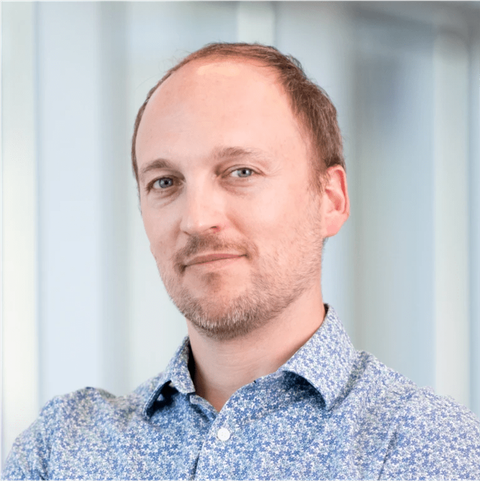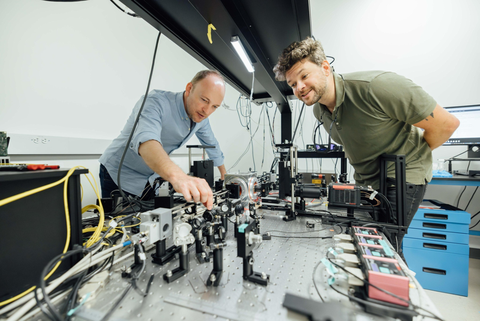Loic A. Royer
Master in Computational Logic, 2003
Doctorate in Bioinformatics from Biotec, TUD, 2010
What do you do today?
I am Director of Imaging AI and Senior Group Leader at the Chan Zuckerberg Biohub San Francisco. In this role I lead a multidisciplinary team of optics engineers, AI scientists, bioinformaticians and developmental biologists. Together we design next-generation light-sheet microscopes, create AI-powered image-analysis algorithms and integrate the resulting multimodal datasets into a "virtual vertebrate embryo," driving the institute-wide program "Dynamic Emergence of Cell Types." Through this work we push the frontiers of microscopy, computational biology and machine learning to reveal how cell types arise during vertebrate development.
Information about your company
I work at Chan Zuckerberg Biohub San Francisco (CZ Biohub SF). CZ Biohub SF is an independent, nonprofit research institute created by the Chan Zuckerberg Initiative to accelerate biomedical discovery in partnership with UC Berkeley, UC San Francisco, and Stanford University. Head-quartered in San Francisco's Mission Bay district, the Biohub supports collaborative investigator programs and shared technology platforms that span its three partner universities.
Why did you choose computer science?
From the moment I realized a few lines of code could make pixels dance or a robot move, I understood computer science was a form of applied curiosity - a way to turn pure logic and mathematics into tangible reality. In my early teen years, I was fascinated about writing highly optimized codes, sometimes in assembly, to create visual effects on the computer screen. During my lycée years I immersed myself equally in maths, physics and programming, discovering that algorithms can be as elegant as equations yet immediately actionable.
That fascination led me to first studies in Math and Physics, and eventually an engineering degree focused on artificial intelligence and robotics. Today my work still sits at the crossroads of physics, computer science and biology; CS is the connective tissue that lets me weave optics, AI and developmental-biology questions into one narrative questioning biological reality.
Why did you choose to study in Dresden?
When I started my engineering studies in France, I was given the chance of doing a one year stay in Dresden, as part of an exchange program with the Master in Computational Logic. This was the start of my long adventure in Dresden...
What do you particularly remember from your studies?
So much! Dresden and its scientific ecosystem have been incredibly formative for me as a scientist: From my early days at TUD's faculty of computer science studying Computational Logic, to TUD's BIOTEC where I did my doctorate, or later at the Max Planck Institutes (MPI-CBG & MPI-PKS), I have had incredible opportunities, and the chance to learn from incredible mentors. I still have many friends and colleagues in Dresden and it will always be a very special place to me.
What happened after your studies?
After completing a PhD in Bioinformatics at TU Dresden in 2010 - where I introduced power-graph analysis to unravel complex protein-interaction networks - I set out to transition to instruments and biology. My first stop was Stephan Grill's lab at MPI-CBG/PKS (2011), where I robotized dual-trap optical-tweezer experiments so single-molecule transcription could run hands-free . In 2012 at HHMI Janelia, working with Philipp Keller and Gene Myers, I co-designed the first adaptive light-sheet microscope - an "engineering tour-de-force" later showcased on the cover of Nature Biotechnology.I then joined Gene Myers' group at the Max Planck Institute in Dresden (2013-2017), integrating real-time visualization, electronics and software into "smart" microscopes and co-authoring the seminal CARE paper that sparked deep-learning adoption in bioimage analysis. Armed with those interdisciplinary tools, I moved to San Francisco in 2017 to found a research group at the Chan Zuckerberg Biohub. Over the next seven years my team of optical engineers, biologists and AI scientists built next-generation light-sheet microscopes and deep-learning pipelines to create systematic atlases of zebrafish development. Since 2024 I have served as Director of Imaging AI and Senior Group Leader at CZ Biohub SF, assembling a world-class AI team and spearheading the institute-wide "Dynamic Emergence of Cell Types" program while continuing to develop instruments for the "Virtual Vertebrate Embryo" initiative. Across these roles, the common thread is using inventive hardware and machine intelligence to watch living systems build themselves - turning pixels and photons into biological insight.
What are your hobbies?
I like to compose and improvise music on the piano, 'make' things like 3D-printed speaker systems or robots, take photographs, go skiing downhill, go on hikes in the Californian wilderness, or watch blockbusters on very big screens.
Contact:
Dr. Loïc Alain Royer
Director, Imaging AI 💻 🔬 ⚗️
Chan Zuckerberg Biohub SF
499 Illinois St, 4th Floor, CA 94158, San Francisco
BlueSky: https://bsky.app/profile/loicaroyer.bsky.social
Website: https://www.czbiohub.org/royer/
Phone: +1 (415) 941-1820


